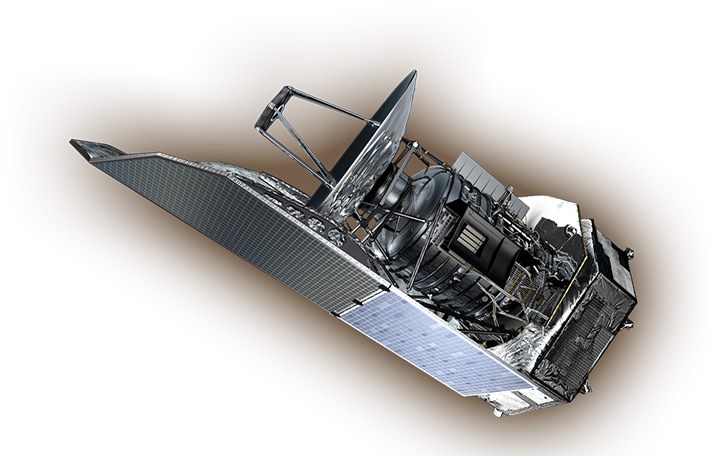
Pools of Cold Dust Around SN 1987A
This plot shows energy emitted from a supernova remnant called SN 1987A. Previously, NASA's Spitzer Space Telescope detected warm dust around the object. This dust formed before the explosion, but as shock waves impacted pre-existing dust grains, they heated up. In contrast, the Herschel Space Observatory, which sees longer wavelengths of infrared light than Spitzer, detected cold dust that formed after the explosion. A large amount of this dust is made from the gas ejected by the supernova itself. The formation of this dust started at least two years after the explosion, while gaseous material slowly expanded from the center of the supernova remnant. Dust continued to cool and release light at the longer infrared wavelengths Herschel sees.
The Hershel data were taken by the Photodetector Array Camera and Spectrometer, and the Spectral and Photometric Imaging Receiver, at wavelengths of 100, 160 and 250 microns, which are just about one-tenth to one-quarter of a millimeter.
Herschel is a European Space Agency cornerstone mission, with science instruments provided by consortia of European institutes and with important participation by NASA. NASA's Herschel Project Office is based at NASA's Jet Propulsion Laboratory. JPL contributed mission-enabling technology for two of Herschel's three science instruments. The NASA Herschel Science Center, part of the Infrared Processing and Analysis Center at the California Institute of Technology in Pasadena, supports the United States astronomical community. Caltech manages JPL for NASA.
Image Details
- Date
- July 7, 2011
- ID
- nhsc2011-012b
- Type
- Chart
- Credit
- ESA/NASA-JPL/UCL/STScI
Object Details
- Name
- SN 1987A










